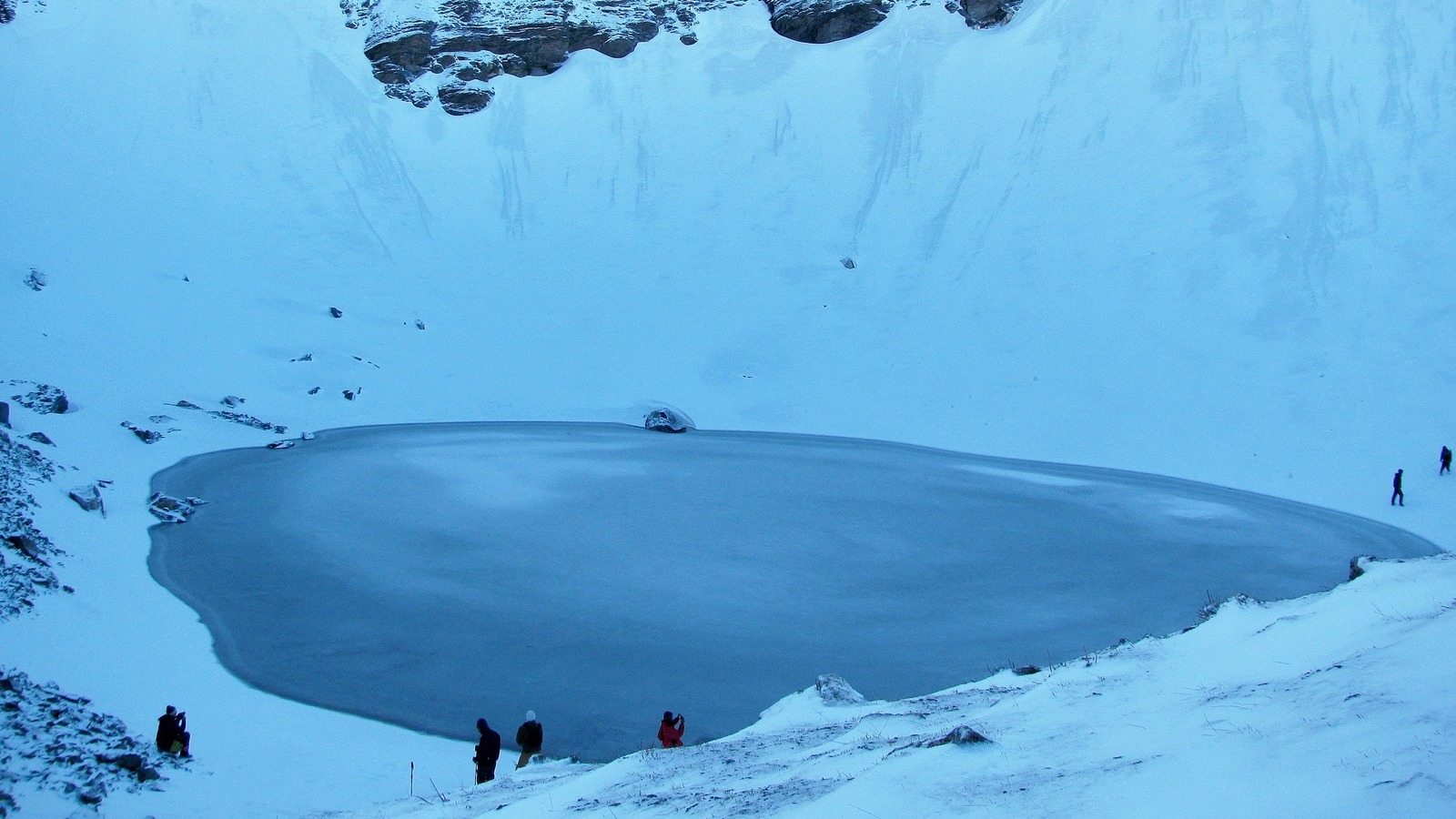
The mountains of Uttarakhand, India are so vast, grand, and wide-reaching that it’s no wonder Roopkund Lake remained unknown all the way until 1942 — except to those who’d died there, of course. Back then, an Indian forest official named H.K. Madhwal stumbled across not only the lake but hundreds of bones in and around the water.
Almost no skeleton at the lake was complete, and no skeleton showed evidence of death by violence. There was also no evidence of death by illness or ritual suicide, and most of the dead were between 18 and 35 years old. The remains included men, women, and children who left nothing behind but bits of leather slippers, pieces of parasols made from bamboo, and bangles made from glass or seashells. By all accounts it seems the cold mountain air had helped preserve the remains. Eventually, Roopkund Lake earned the nickname, “Skeleton Lake.”
Initially, suspicions about the bones — strangely enough — pointed to Japanese soldiers sneaking through the mountains, possibly because 1942 fell in the middle of World War II. Other suspicions pointed to the Silk Road, the ancient trade route between Rome and China that also passed down through the Indian Himalayas and out to the Bay of Bengal. If the latter was true, then the traders would have died for some reason when stopped at the lake. Later analyses, however, revealed very different answers, and two entirely different sets of bones.





